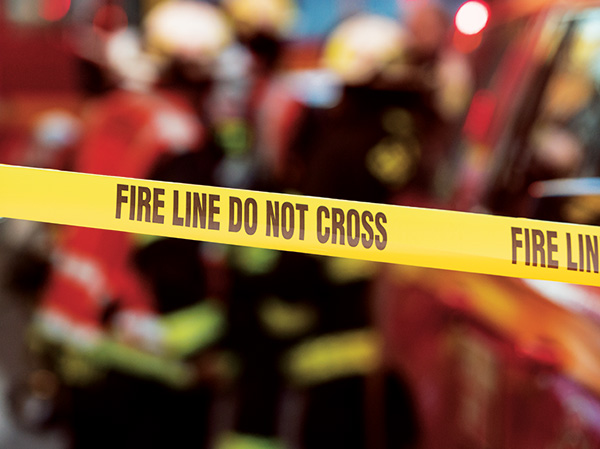How to manage emergency situations
Sometimes firefighters are injured, and on rare occasions die, while responding to a fire, explosion or any type of emergency.

Photo: 400tmax/iStock / Getty Images Plus/Getty Images
The National Fire Protection Association reports that 60,750 firefighters were injured when responding to fire, explosion and emergency incidents in 2021. That is the fifth-lowest injury count since 1981.
When injuries occur to first responders, many states have decided that as a matter of public policy and as a matter of law that they may not recover in tort for their injuries or death if the injuries incurred were from responding to the emergency that brought them to the scene. In essence, the rule is that a person who negligently starts a fire is not legally liable for that negligence when it causes injury to a firefighter who comes to extinguish the blaze.
This rule has been applied broadly to police officers and EMTs responding to an emergency or fire. It has also been applied to nurses injured by dementia patients in a hospital.
However, first responders may recover for their injuries when responding to an emergency or fire if the injury is caused by an intentional or willful act or by a defective product. For instance, if firefighters respond to a fire, and illegal munitions explode and injure them, they may recover against the owner of those illegal munitions for their injuries. Injuries related to a defective gas mask is another example.
Public policy
When deciding to establish the Fireman’s Rule, the courts looked to five public policy factors:
- The injury is too remote from the negligence.
- The injury is too wholly out of proportion to the culpability of the negligent tortfeasor.
- In retrospect, it appears too highly extraordinary that the negligence should have brought about the harm.
- Because allowance of recovery would place too unreasonable a burden on the negligent tortfeasor.
- Allowance for recovery would enter a field that has no sensible or just stopping point.
If just one of these five public policy factors applies to a particular case, that is sufficient to apply the Fireman’s Rule and bar a claim by a firefighter. Courts mostly have focused on the fourth and fifth public policy factors.
Courts have concluded that firefighters already have been warned of the hazards they will encounter when responding to a fire. Courts wish to encourage and not deter those whose negligence starts a fire from calling for the appropriate assistance. If we subject landowners to liability for injuries to firefighters responding to fight the fire, they may be hesitant to call for help. It would contravene public policy to permit firefighters to recover for their injuries from fighting a fire from individuals who already have been taxed to provide compensation to the firefighters.
Firefighters receive worker’s compensation benefits if they are injured in the course of duty. If they die during the course of duty, they receive additional death benefits. All of these benefits are paid with taxpayer funds.
The very purpose of the firefighting profession is to confront danger. Firefighters are hired, trained and compensated to deal with dangerous situations that are often caused by negligent conduct. Many courts have concluded that it offends public policy to say citizens invite private liability merely because they happen to create the need for public services.
Rule application
The application of this rule is specific to each case.
In some cases, the facts are straightforward, and a trial judge will decide to dismiss a case brought by a firefighter prior to sending it to a jury for trial. This is when the material facts are not in dispute.
In other cases, conflicting facts may require a jury to hear the case and decide if the Fireman’s Rule applies. In the end, the application of the Fireman’s Rule is a question of law, and the final decision rests with the trial judge. Any decision by a jury would inform the trial judge. The trial judge may accept the jury finding or set it aside and render a different decision.
John V. McCoy is with McCoy, Leavitt, Laskey LLC. His firm represents industry members nationally. He can be reached at jmccoy@MLLlaw.com or at 262-522-7007.
















